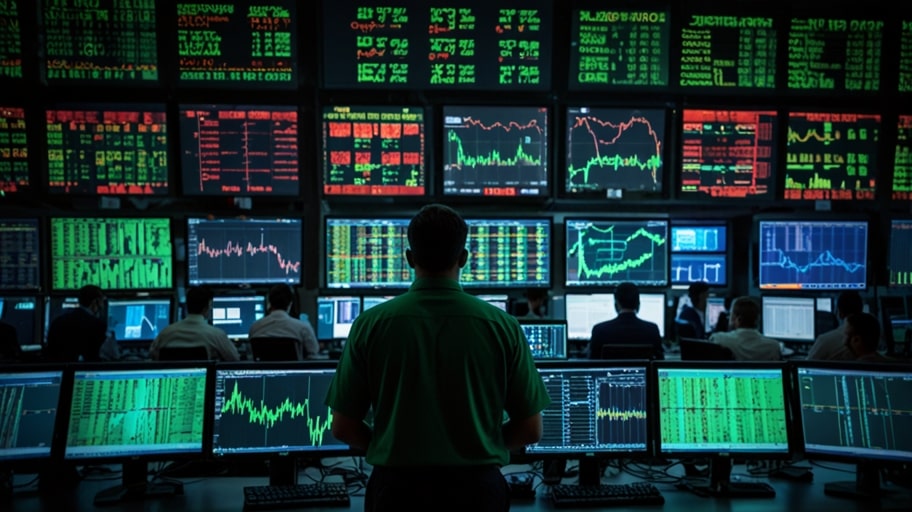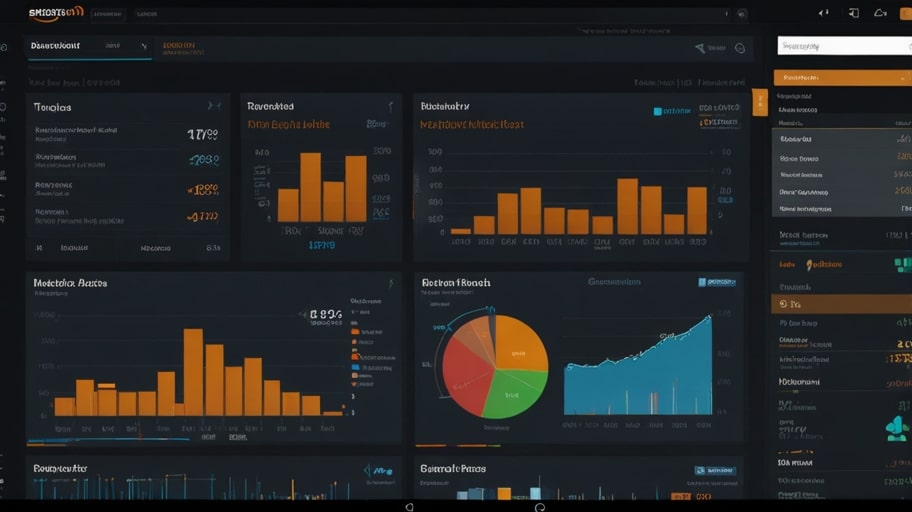Stocks in the technology sector all over the world had a very good day as a result of the news that the artificial intelligence chip restrictions designed by the government to prevent an AI uprising are not as tight as everybody was thinking recently.
Investors backed semiconductor businesses and pushed the stock market indices up. The out-of-nowhere good mood, in turn, stimulated a series of stock trading on the major exchange platforms.
The US became the epitome of this euphoria as it certainly was the largest beneficiary of the movement. Chip producers ruled Wall Street as they registered a nearly three percent gain in the semiconductor indices.
As a result, the rest of the tech ecosystem also continued the upbeat attitude, and splinter companies of the AI hardware sector were heavily bought by market participants, which showed a lot of venture capital for innovative computing power products.
European stock markets were no less enthusiastic, with indices in Frankfurt and Paris delivering a positive surprise. The most striking piece of news was the volume of trades regarding the tech sector.
It rose as investors shifted their holdings so that they could profit directly from the rise in that sector. The general mood was very bullish, with the majority of the market convinced that the strict legislation could stall AI but not prevent it.
China, Japan, and South Korea have made considerable progress compared to the potential of India and Australia, which have undergone some difficulties. In the case of India and Australia, the mixed bag of economic indicators displayed on stock exchanges was the cause of it.
Furthermore, orders of chips from Korea were not only steady but so strong that they were another proof that the entire tech sector in the world was doing well. Nevertheless, buy-side players were holding back, hoping that the government would cut a clear figure on the matter of partnerships in the trade market.
The turn of events was connected with a revelation according to which important global community members had deliberately moderated their demands for control over AI chip trading.
The regulation suggested that authorities had the purpose to achieve the perfect balance of the technology sector between the threat of misuse-related issues and the goal of developing it. This change in the regulation took away the fear of losing a tech producer from there, which had been a big headache to the entire industry, hence reducing the overall tech market value.
AI, which is basically all about semiconductor companies, was the most beneficial industry from the news. The companies that manufacture chips with a high-performance class for data centers and the sector of autonomous systems got their share prices sent through the roof. The rally reached even further to the related sectors like cloud computing and software, especially in the situation of accelerating AI adoption globally.
Analysts guessed that the market’s rapture was due to the fact that AI is the key element in the economies of the near future. The request for the chips that are capable of supporting machine learning and generative models is still increasing. Investors are positive about this field as being the one to produce long-term growth, while they are also aware of the fact that there will be occasional legal difficulties.
Nevertheless, some experts had a word of caution for people being overly optimistic. The news of chip regulations being eased is definitely a great sign, but the problem of geopolitical tensions might still have an influence on supply chains. Trade disputes and export restrictions can still be the main potential risks, especially for those companies that are based on cross-border manufacturing.
The rally was the people’s chance to experience the link between one market and the entire world. With the rise of tech stocks in the U.S., the news of which quickly reached Europe and Asia, the interdependency became evident. Furthermore, the strengthening of the dollar against the major currencies made the exchange rate play a great role in the investment flows.
One of the serious problems that the chip manufacturers had, i.e., the energy costs, was a bit less pressing. When the oil prices went down, it was a great relief for the energy-guzzling manufacturing processes. Besides, it has also played the part in success of the bullish market sentiment, as the companies now expect to have a higher profit margin in the next quarters.
The market’s overreaction has emphasized the need for technology to stay clear of political ambiguity. Investors have been facing the question of lack of transparency in the process of AI governance for a long time. The present good outcome suggests that even the small steps taken towards the regulatory structures can cause the inflow of a big amount of capital.
Even small tech firms thrived with some even reaching gains in the double digits. AI startups also had a lot of venture capital activity, with the trend indicating that the new giants have been already born beyond the tech space.
But despite this, we find out that there are certain regions in which trading is still quite volatile due to profit-taking at the close of the day. The effect was visible by the fact some markets trimmed the gains by executing this strategy. Observers of the market noted that the participants were somewhere in between really high hopes and caution as the sector has always been one which is sensitive to policy changes.
The upward momentum of the rally will most probably continue next week, no matter what occurs unexpectedly. Analysts expect the market watchers to pay attention mainly to the data about the economic situation, especially inflation and manufacturing. The data can really be the force guiding the Central Banks of some countries in making their decisions that may potentially affect the valuation of those technological and other stock.
In the current situation, the tech business is globally considered to have excellent prospects, thereby increasing the rate of investment in AI from driverless cars to breakthroughs in the medical sector. These minimized restrictions on chip usage have thus given an added boost to the already hoped-for, and hence, the movement of funds to the future-oriented companies was given a further push.
A day’s events throw further light on how feel is the lead player in the markets. For example, the good news of AI chips caused a widespread takeover from the buyers, so that across regions, the gains were further fueled. The example is a demonstration of how quickly and profoundly opinions can shorten distance in the rapid tech landscape.
After the money markets closed, focus automatically shifted to the forecasted corporate earnings. Technology firms feel compelled to satisfy their shareholders’ demand for growth, which is shown with the high valuations. Key are the revenue gains of the AI core sector which are the pivotal enlarger of the market.
The technological revolution that is taking place globally serves as a testament to the broader trends in the economy, such as digitalization and automation. It is believed that companies that use AI solutions are more resilient in the case of economic declines and, therefore, are more positively evaluated by investors. This belief, in turn, has been the main reason behind the fact that even macroeconomic challenges have not affected the overall interest in the sector.
It is obvious that in the near future, the relationship between regulation and innovation will be the major determinant of the direction the technology sector is heading. Against this backdrop of current market actions, it is easy to see that the market is ready to pay for the results achieved in this area. However, the task of the politicians is to foster growth and allay legitimate security concerns simultaneously.
It is obvious that investors can pick the right direction: global markets are still heavily influenced by AI technology and semiconductors. If the new rules “permit” the further development of innovative fields, the present increase may be the beginning of a more extensive wave in the near future. With the technology reshaping the economies, all the players are upping the ante at the same time.




